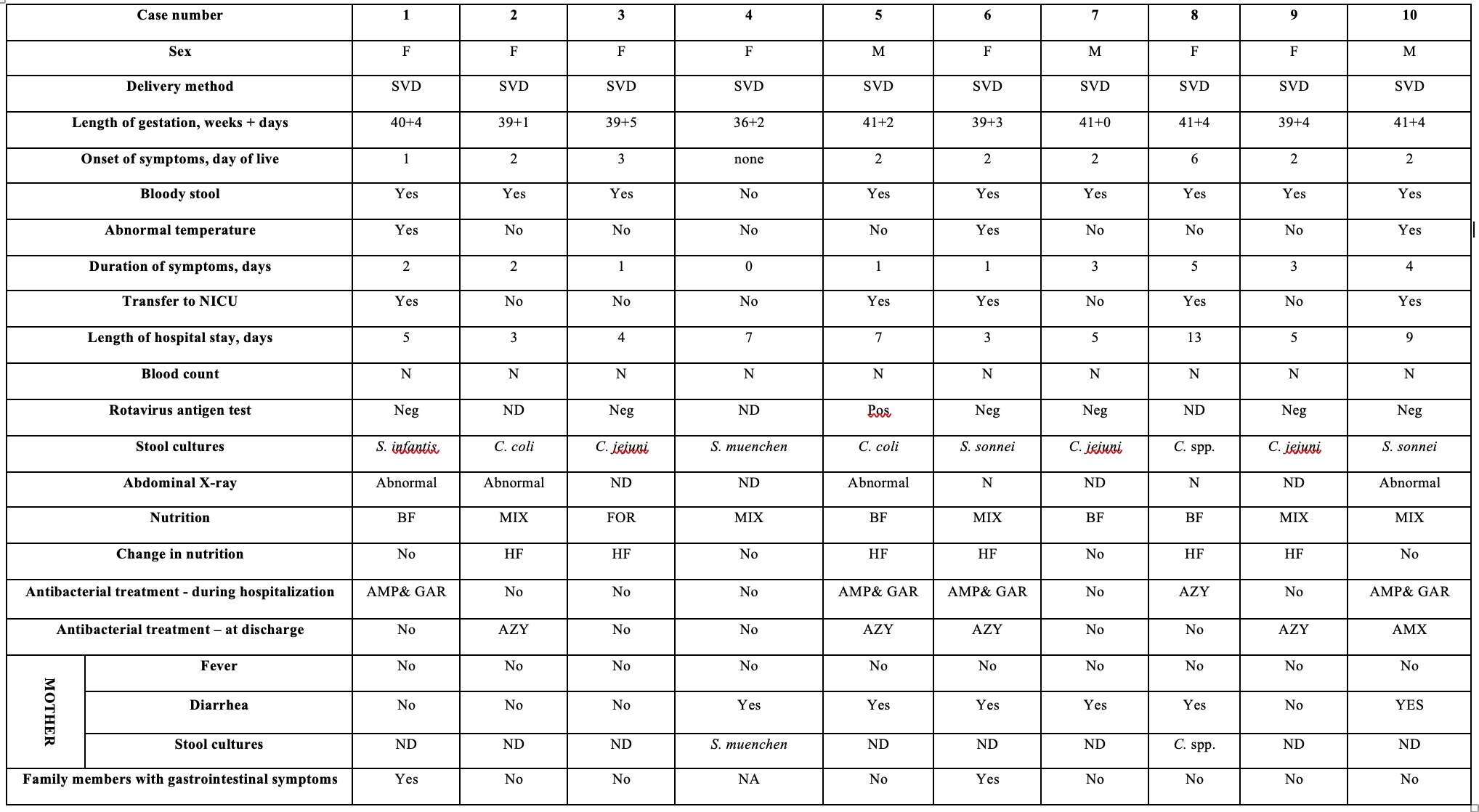
Epidemiological and Clinical Characteristics of Bacterial Gastroenteritis in the Newborns
2Sackler Faculty of Medicine, Tel-Aviv University, Israel
3Pediatric Infectious Disease Unit, Dana Dwek children Hospital, Tel-Aviv Sourasky Medical Center, Israel
4Clinical Microbiology Laboratory, Tel-Aviv Sourasky Medical Center, Israel
Aim: Acute bacterial gastroenteritis is a major cause of morbidity and mortality, especially in the developing countries. We examined the incidence, clinical features and outcomes in the first week of life.
Methods: This was a retrospective study of culture-proven bacterial gastroenteritis in newborn infants that were diagnosed between January 2011 and September 2018 in a tertiary centre in Israel.
Results: There were 10 cases of culture-proven bacterial gastroenteritis, detected out of 91 stool cultures. All infants were born vaginally and nine were full-term infants. The annual incidence was 0.096 per 1000 live births. The responsible pathogen was Campylobacter in six patients, Salmonella in two and Shigella sonnei in two. The mean age of disease onset was two days of life. Antibiotics were given to five patients, but were inappropriate in two cases. Only one patient with the Shigella sonnei infection required respiratory support. All patients fully recovered.
Conclusion: One in ten newborn infants with bloody stools had bacterial gastroenteritis, contradicting the low rates found in other studies and indicating the importance of considering this diagnosis. Antimicrobials active against Salmonella or Shigella should be given to newborn infants who have bloody stools and look ill.

Powered by Eventact EMS